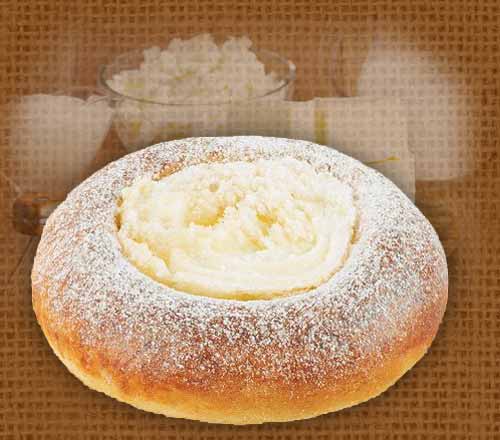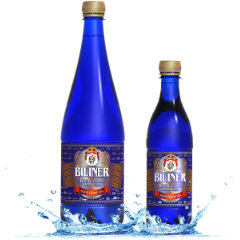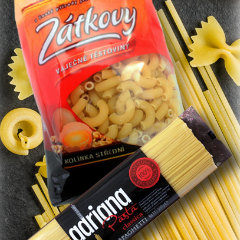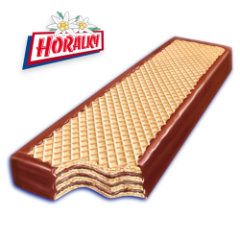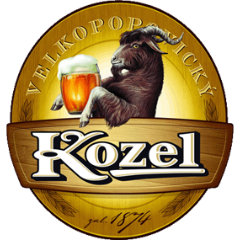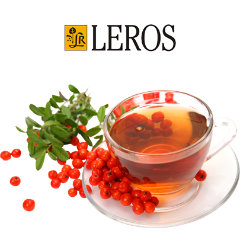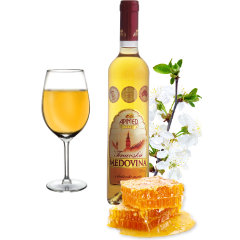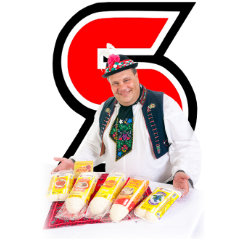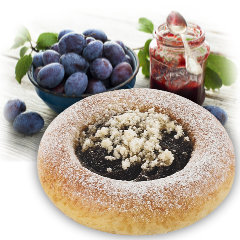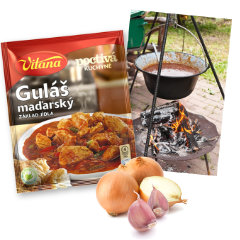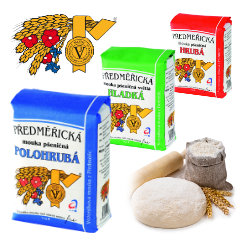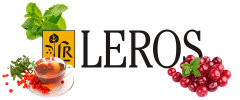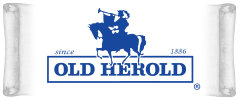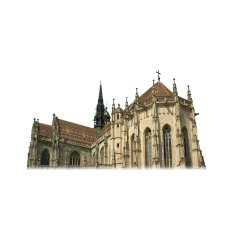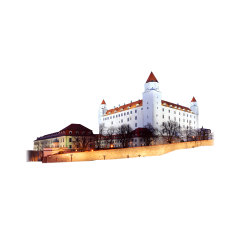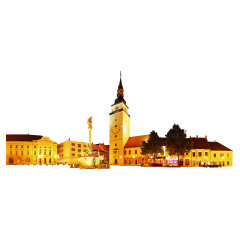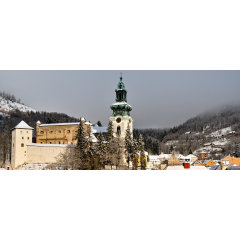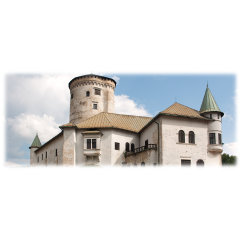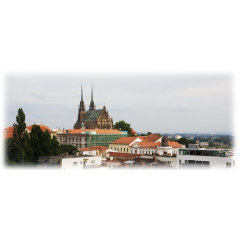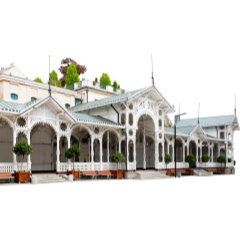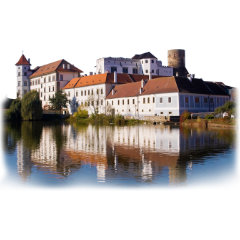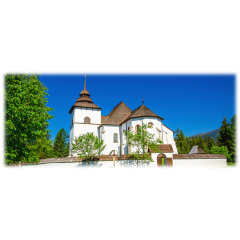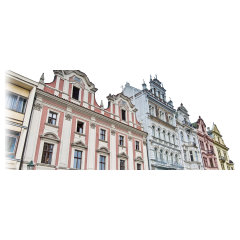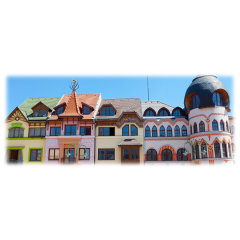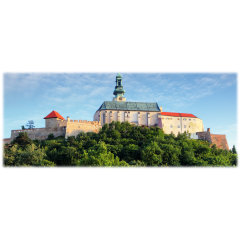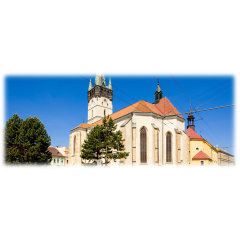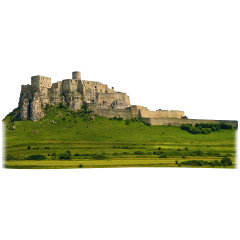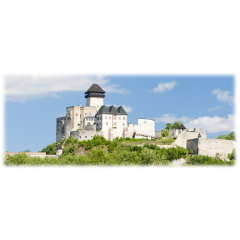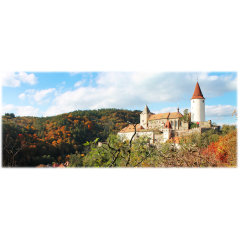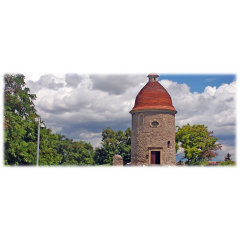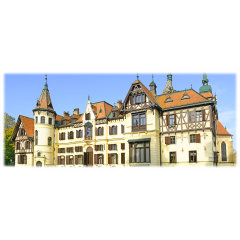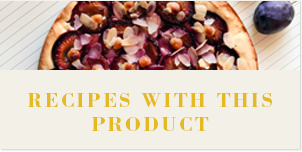Traditional Czech Pastry
You may be inspired by traditional recipes of this Czech region. Have an insight and try to use a traditional kitchen of our grandmothers and great-grandmothers who have the biggest experience with baking.
Yeast cakes are handmade and for production are applied just local ingredients. Connection of plum jam, curd cheese and poppy together with local premium flour creates a product of a high quality.
To keep a taste of tradition and also use handwork to every single product is the reason to say that every piece is original. Yeast cakes are really tasty and smooth so if you try them you always want some more because you are going to feel a taste of Czech region and its nature.
Poppy seed pastry
Poppy seed pastry –“ kolach” is a type of pastry that holds a dollop of sweet poppy filling rimmed by a puffy pillow of supple dough. To make a poppy seed filling the poppy seeds are grinded. Grinding produces a finer texture and better flavour. The poppy seeds are combined with a milk, sugar, lemon juice, salt, and optional zest; then simmered over a medium-low heat, stirring frequently, until the mixture thickens.
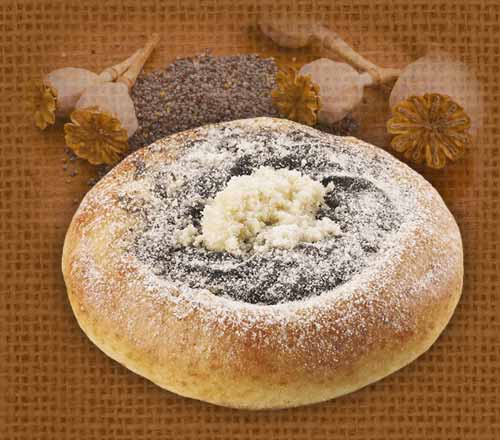
original plum jam pastry
Plum filling pastry is soft pastry of yeasted dough with a divot in the centre traditionally filled with plum stew. Many Czech families had their own secret kolache recipe handed down from generation to generation, mothers and grandmothers assiduously instructing the young girls. The dough, abounding with butter, should be rather dense, not fluffy. Some prefer a plain flavour, while others add a hint of spice or lemon zest to the dough. Regular jam cannot be used for kolache as it soaks into the dough and boils over during baking. Povidla is a plum stew. Unlike jam or marmalade, and unlike the German Pflaumenmus (plum puree), povidla is prepared without additional sweeteners or gelling agents. Povidla is cooked for several hours, in order to achieve the necessary sweetness and consistency. The plums used should be harvested as late as possible, ideally after the first frosts, in order to ensure they contain enough sugar.
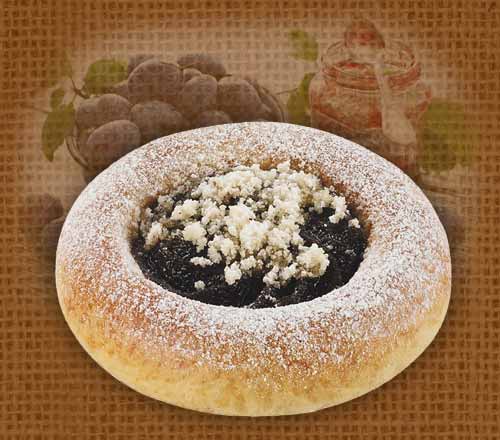
curd cheese pastry
Curd cheese pastry: Traditionally, newly engaged women sent small kolace to family and friends as an invitation to the wedding. They are still quite often made in the villages during the feast as festive meals or during major events such as weddings . They are usually small, with a diameter not exceeding 8 cm and have the filling topped with a sweet crumble , or sugar. The finest curd cheese in the world is found in the Czech Republic and Slovakia and is very different to the English one. Rather than mixing relatively large amounts of rennet into milk at room temperature, traditional Czech and Slovakian curd cheese makers warm soured milk until the desired degree of coagulation is reached, adding only a small amount of rennet to make the curd firmer. Then they hang the cheese in loosely woven cotton gauze and let the whey drip off. This patient, natural process results in curd cheese that has a delicate balance of texture and taste.
